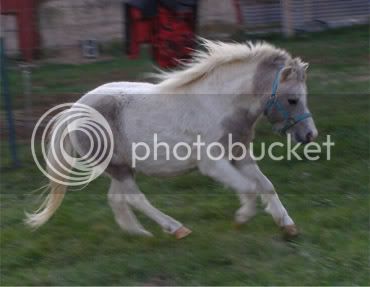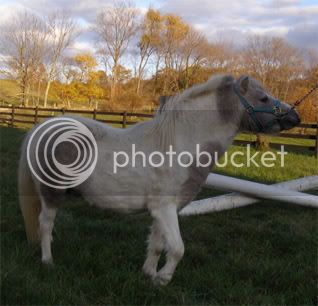shoeboxstables
Well-Known Member
Hi all,
I was wondering when you all start working and preping your show horses again. Last year, I started my mare in early March for a May show, but my problem was coordinating workouts around the weather. I want to show my stallion and mare next year, but I'm worried about making it work. He's put on quite a bit of weight. I hope to continue to work him at least two times a week, but the weather makes it tough. So when should I start working the two of them to have them ready by the beginning of May? What's your late winter schedule? The mare drives, does jogs on the golf cart, lunges, ground drives, and will jump cross rails. We have paddocks that funciton as 'arenas' but no round pen. The stallion jumps medium-high courses (that's what we're working on now), and lunges. I hope to start ground driving him by Jan, and would like to have him hitched by Feb. What sort of excercises would you recommend? What can I do when there's snow on the ground? We get quite a bit! We have a barn isle-way that can be used for halter/showmanship schooling, but no real way to work the horses when there's snow on the ground. What can we do when we're snowed in?
As of right now, I keep both out on pasture 24/7. They are given ~1 cup of Omalene (200? Active Pleasure) grain once a day in the morning. The stallion is given about 3/4 a flake 2x a day, and is out in a fairly large pasture. It has grass in it, but that's fickle depending on the weather. The mare shares a paddock with a 2 mares and gelding, and they get 2-3 flakes 2x a day to split between them all. The mare is contained in a small lot 1/2 of the day, and roams in a large paddock the other half of the day. Again, there is grass, but that depends on weather. What changes should I make for their diet as show season approaches?
We do have stalls available. However, it's a bit of a pain to shuffle them all around, and my mom pretty much refuses to work with the stallion to get him outside for turnout. Should I stall them? For how long? Starting when? We don't have a true dry lot. How long should they be out on grass?
I do need to sweat both of their necks. The mare has always had a fat neck, but will not be showing much in halter (except for Youth Halter Mares). However, the stallion has put on quite a bit of weight, and NEEDS to be sweated. He will be shown in halter. I do not feel confortable leaving the sweats on in the paddocks, so how much should I sweat them? (I guess this goes hand in hand with the above question)
THANK YOU SO MUCH IN ADVANCE FOR YOUR HELP!!!!!!


I know I'm asking a ton of questions but thank you so much!!
-Kaitlyn
I was wondering when you all start working and preping your show horses again. Last year, I started my mare in early March for a May show, but my problem was coordinating workouts around the weather. I want to show my stallion and mare next year, but I'm worried about making it work. He's put on quite a bit of weight. I hope to continue to work him at least two times a week, but the weather makes it tough. So when should I start working the two of them to have them ready by the beginning of May? What's your late winter schedule? The mare drives, does jogs on the golf cart, lunges, ground drives, and will jump cross rails. We have paddocks that funciton as 'arenas' but no round pen. The stallion jumps medium-high courses (that's what we're working on now), and lunges. I hope to start ground driving him by Jan, and would like to have him hitched by Feb. What sort of excercises would you recommend? What can I do when there's snow on the ground? We get quite a bit! We have a barn isle-way that can be used for halter/showmanship schooling, but no real way to work the horses when there's snow on the ground. What can we do when we're snowed in?
As of right now, I keep both out on pasture 24/7. They are given ~1 cup of Omalene (200? Active Pleasure) grain once a day in the morning. The stallion is given about 3/4 a flake 2x a day, and is out in a fairly large pasture. It has grass in it, but that's fickle depending on the weather. The mare shares a paddock with a 2 mares and gelding, and they get 2-3 flakes 2x a day to split between them all. The mare is contained in a small lot 1/2 of the day, and roams in a large paddock the other half of the day. Again, there is grass, but that depends on weather. What changes should I make for their diet as show season approaches?
We do have stalls available. However, it's a bit of a pain to shuffle them all around, and my mom pretty much refuses to work with the stallion to get him outside for turnout. Should I stall them? For how long? Starting when? We don't have a true dry lot. How long should they be out on grass?
I do need to sweat both of their necks. The mare has always had a fat neck, but will not be showing much in halter (except for Youth Halter Mares). However, the stallion has put on quite a bit of weight, and NEEDS to be sweated. He will be shown in halter. I do not feel confortable leaving the sweats on in the paddocks, so how much should I sweat them? (I guess this goes hand in hand with the above question)
THANK YOU SO MUCH IN ADVANCE FOR YOUR HELP!!!!!!
I know I'm asking a ton of questions but thank you so much!!
-Kaitlyn





